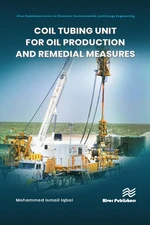Well activation is one of the most important aspects in the oil and gas industries and nitrogen gas is predominately used. The gas, being light, is sent down the producing reservoir which will enhance the production or improve the flow of crude oil. In addition to the methods used to increase production there are several problems like sand production and water production from the producing wells. Sand production occurs when the destabilizing stresses at the formation face exceed the strength of the natural arching tendencies and/or grain-to-grain cementation strength. Ideally, during oil production, the formation should be porous, permeable and well consolidated through which hydrocarbons can easily flow into the production wells. But sometimes, especially during production from unconsolidated sandstone reservoirs, the produced hydrocarbons may also carry large amounts of sand into the well bore and sand entering production wells is one of the oldest problems faced by oil companies and one of the toughest to solve. These unconsolidated formations may not restrain grain movement, and produce sand along with the fluids especially at high rates. Water production is also a problem that many reservoir or production engineers face in day-to-day life. As engineers we should be able to decide whether water control solutions should be applied or not. The excess production of water is caused by the depletion of the reservoir and simply sweeps away most of the oil that the reservoir can produce. This book gives an information how well activation using nitrogen is carried out, and how sand control and water control issues can be resolved.
Price history
▲112.04%
Dec 15, 2022
€115.71
▼-52.84%
Nov 18, 2022
€54.57
Sep 7, 2022
€115.71

